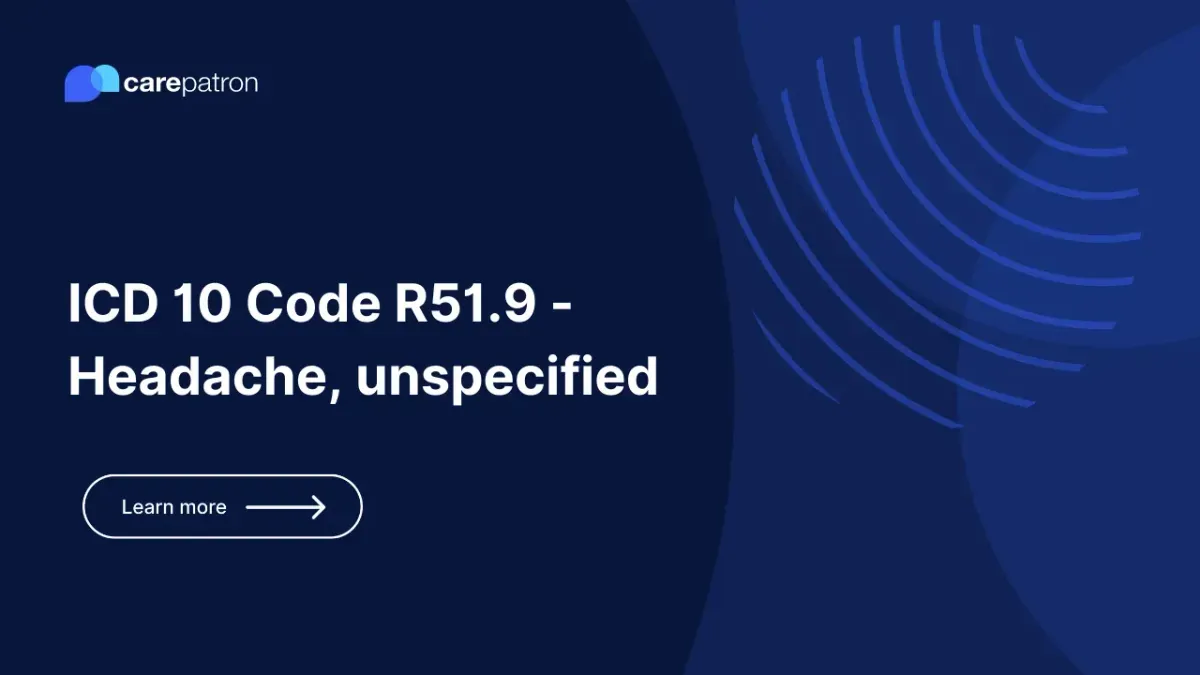
R51.9 – Headache, unspecified
Learn more about the ICD-10-CM code R51.9 for headache, unspecified, its clinical information, relevant FAQs, billability, and more.
Use Code
Commonly asked questions
Yes, this ICD-10 code is billable.
You use it when you have confirmed that a patient has a headache, but you have not identified the specific type, its severity, or if it has certain characteristics.
That will depend on the specific headache, the severity, the cause, and its characteristics. But a common treatment for headaches involves resting, sleeping, eating enough food, drinking fluids, and taking pain relievers.
EHR and practice management software
Get started for free
*No credit card required
Free
$0/usd
Unlimited clients
Telehealth
1GB of storage
Client portal text
Automated billing and online payments
